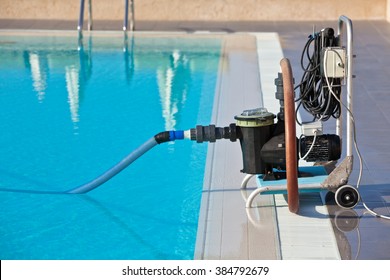A swimming pool is nothing without pristine water. Having this feature at home will be meaningless if it is not well-maintained. After all, who would want to swim in cloudy and dirty water? That’s why you have to dedicate some time to regular care and cleaning. Having proper swimming pool equipment in place is crucial for this. For example, you can think of pool pumps. These systems help with the water flow, chemical balance, and sanitization. Pumps filter, heat, and sanitize water before it enters the pool again. It moves pool water several times as per the pool size to avoid algae growth.
However, open pools get dirty quickly as fallen leaves, twigs, branches, dust, and other unwanted elements get easy entry into them. If you put one level of check by installing swimming pool covers and rollers already, your pool water would have a lower risk of contamination. At the same time, your pump will not have to endure additional pressure while cleaning the pool.
Although it is the fundamental thing, you may have several questions about its usage. So, here is speaking of some of them to help you with this routine job as a swimming pool owner.
Running the pool pump for the best outcome
As hinted at once, pool enclosures can reduce the amount of dirt and dust accumulation in the pool water because they shield the area. Still, this situation is not avoidable. Therefore, ensuring regular cleaning and maintenance will be a good idea. While the level of work can impact how long the equipment should run, you also have to consider other factors. For example, you must know the gallons of water that pass through the filters per hour. Besides, you also need to be aware of the pool’s water volume. You can figure this out if you know the length, depth, width, and shape of the pool.
Once you get the volume, you can divide it by eight to estimate the gallons of water that enter the pump every hour. Usually, the pool pump’s measurement takes into account gallons per minute (GPM) than gallons per hour (GPH). So, you can further divide GPH by 60, where the number depicts seconds per minute. Eventually, you will know how long your pump needs to run for a complete turnover. Some believe that eight hours or more can be the ideal limit for this activity.
However, it would be best if you also chose the right time for this maintenance process. How long at a stretch the pump should run and how many hours of which part of the day it should run are other critical considerations. Although the pump has to work for at least eight hours a day, you can divide the time into two slots – three hours and five hours. For example, if your family swims in the morning, you need to see that the water is clean at that time.
So you would naturally run the pump for a few hours during the day. At the same time, your awareness of peak electricity hours can also play an essential part in this. Running your pump when high charges apply can increase your energy cost. If you wish to avoid this situation, try to sync this work with off-peak hours. After all, you wouldn’t want anything to discourage you from doing the right thing for your pool.
One more thing you cannot miss out on is the timing of shocking the pool. Chemicals need to mix well with the pool water for complete sanitization. When you operate a pump, it turns the water over to spread chemicals equally. Since you mostly add chemicals in the evening or nighttime to avoid evaporation, your pump will have to be operational at that time.
Buying the right pump for the swimming pool
Choosing a pump becomes easy when you know the amount of water it has to process per cycle. Make sure that your product has adequate GPM capacity to complete its work within eight hours. A pool filled with debris and contaminants can still ask for longer hours of treatment. But you can reduce this problem by installing a retractable pool cover on time. Additionally, looking for a higher horsepower can be wise for a large pool as it will have a faster turnover rate and require fewer operations. Another thing is the pipe size. Bigger pipes can move more water.
Proper maintenance goes a long way in keeping your swimming pool and its equipment safe. Plus, you don’t have to prepare for any major cost until something terrible happens. Besides, you and your family can have a secure swimming experience without worrying about infection and health risks caused by contaminated pool water. So, it will be better to keep your pool covered when not in use and perform cleaning tasks at regular intervals.

